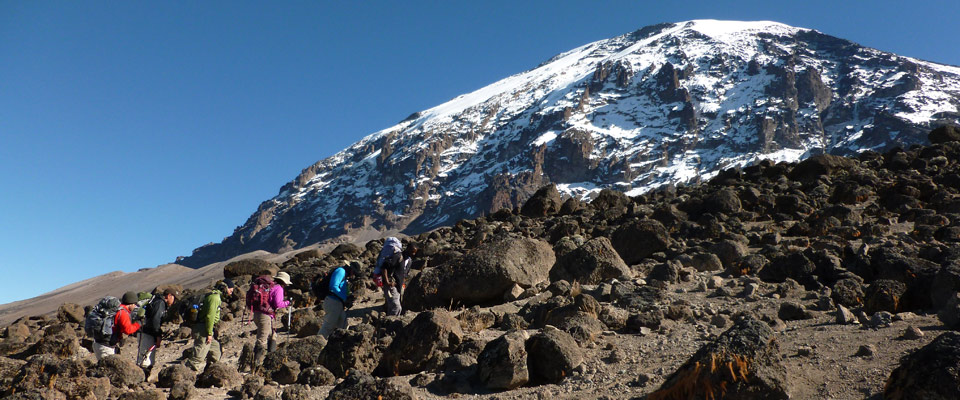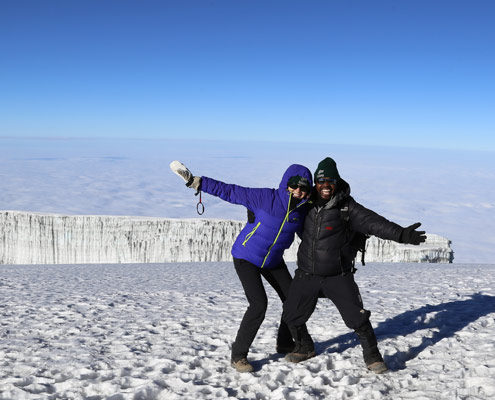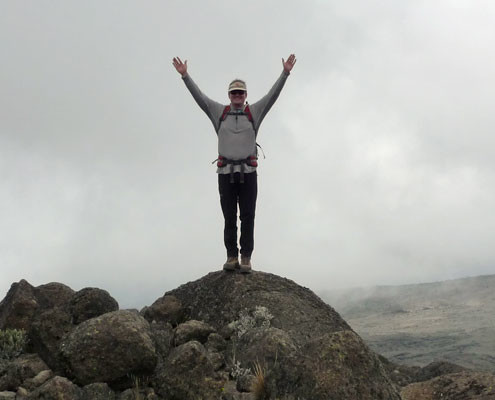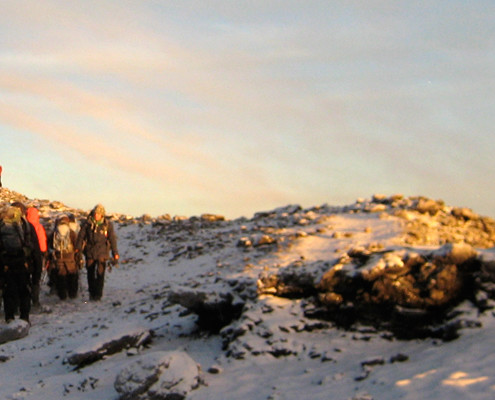(a) Any time! I’ve got my gear. Get me there now!
(b) When it rains
(c) During Summer
(d) It all depends on meThink about this for a moment. Don’t rush. Maybe (a)? Possibly (c)? Confused? Don’t be. Let’s explain.
Any Time (a)
While we love this type of excitement, climbers should not venture up Kilimanjaro whenever they please. There are specific months when climbing is not fun and unsafe. This leads us to…
When it Rains (b)
While this answer is incorrect, it does help explain why certain months are not conducive to Kili climbing. The times between April and May and mid-November through mid-December are when Tanzania receives a significant amount of rainfall. There is not enough for a person to boat up Kilimanjaro, but there’s still enough to render Kilimanjaro relatively miserable and unsafe to climb.
Summer (c)
Terms like “summer” and “winter” are kind of relative when it comes to Mt. Kilimanjaro and Tanzania. This is because there’s really only a 10-15-degree difference between the hottest months and the coolest.
The truth is that whenever you climb Kilimanjaro, the weather will likely be warm at your starting point in the foothills and cold at the summit. Yes, the exact temperatures may vary among different months, but this variance is only slight in degree. For example, the foothills may be a bit warmer in one month compared to the next, and the summit may be a bit colder in one month compared to the next. But, you’re still working with temperatures that are warm at the base of Kilimanjaro and cold at its top.
It all Depends on Me (d)
We have the right answer! If we discard the rainy months, you’re basically left with nine months in which you can climb Kilimanjaro (the weather being warm at the base and cold at the summit) for all of them. So, it’s your job not only to trek up the Roof of Africa, but you’ll also have to decide on the exact month to do it in.
One of the best ways to help you do so, is to consider your other goals in traveling to Tanzania. For example, if you’d like to combine your Kilimanjaro trek with an amazing safari where you can view all the Big 5, then you’d probably want to climb/safari in Tanzania’s dry season (June through October). Or, if you’re thinking a trip to Zanzibar is the best way to recover post-Kili, then you’d probably want to travel to Tanzania during the dry season as well.
One of the best things about planning a trek up Kilimanjaro is that there’s tons of flexibility involved. You just have to consider your specific travel goals. Once established, options abound and await. As always, we’re here to assist when it comes to setting goals and travel plans. Just call us today and let us help!








